Kara Hiragana were invented by Bae Jun and are additional symbols, based on Japanese Hiragana, used to write Korean. Since he started learning Japanese he has devised numerous pseudo-kana symbols just for fun. He used them as a secret code for keeping his diary for a while, but in the early stages each character did not match a specific sound.
In 2004 he created some additional symbols, based on the Japanese mixed writing system, in order to write Korean with accuracy. He has also devised Kara-Katakana, a modified version of katakana which makes the writing of other foreign languages easier using the Korean phonological structure.
Kara Katakana uses mainly diacritics added to existing kana instead of new characters. Like Katakana, it is used for the transcription of foreign words and for emphasis.
The character 韓 is pronounced kara, kan or han in Japanese and means Korea or Korean, in Mandarin and Korean it's prounced han and means the same.
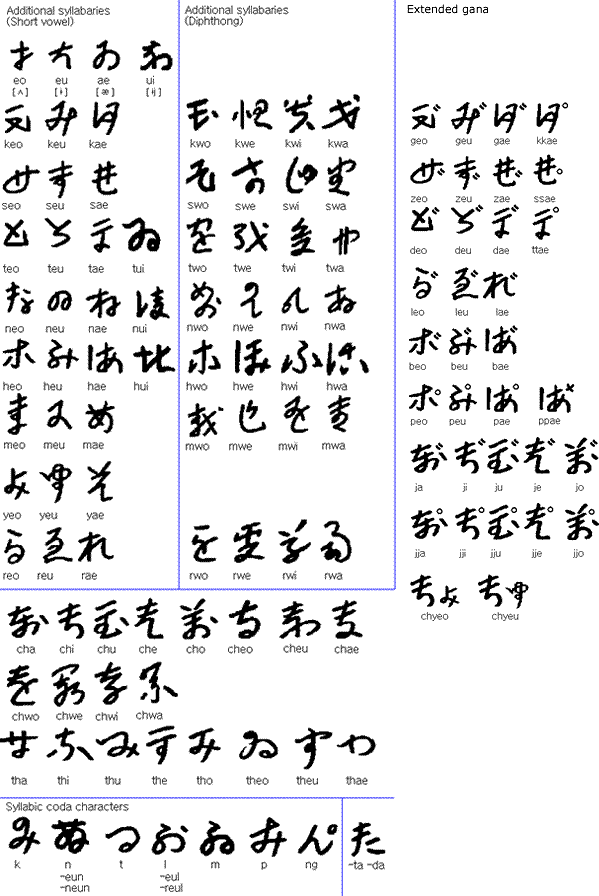
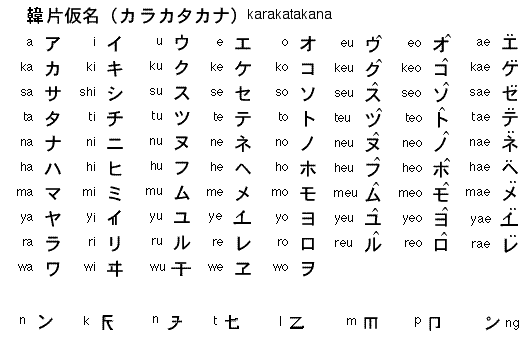
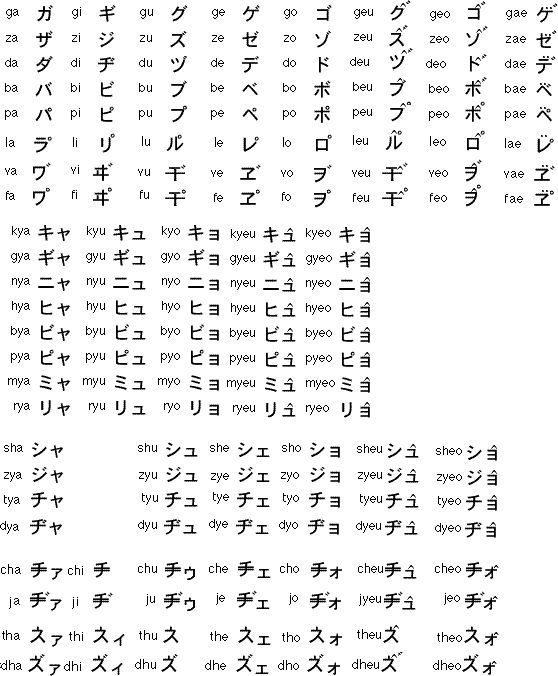
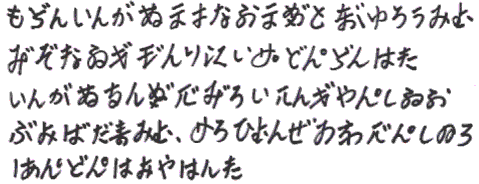
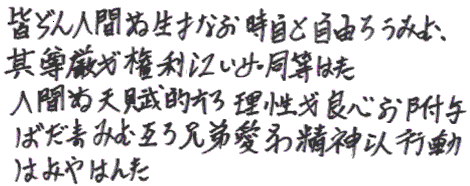
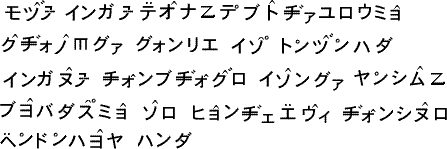

Modeun Ingan-eun Tae-eonal ttaebuteo Jayuroumyeo Geu Jon-eomgwa Gwonrie Iss-eo Dongdeunghada. Ingan-eun Cheonbujeog-euro Iseong-gwa Yangsim-eul Bu-yeobad-ass-eumyeo Seoro Hyungje-ae-ui Jeongsin-euro Haengdongha-yeo-yahanda.
All human beings are born free and equal in dignity and rights. They
are endowed with reason and conscience and should act towards one another
in a spirit of brotherhood.
(Article 1 of the Universal Declaration of Human Rights)
If you have any questions about Kara Hiragana or Kara Katakana, you can contact Bae Jun at: shaxar@hanmail.net
Acrography, Byeokrando, Emoel gugu, Kara Hiragana, Korillic, Kovrit, Naljeogigeul (alphabetic), Naljeogigeul (syllabic), Seumul, T-8
Constructed scripts for: Ainu | Arabic | Chinese languages | Dutch | English | Hawaiian | Hungarian | Japanese | Korean | Lingala | Malay & Indonesian | Persian | Tagalog / Filipino | Russian | Sanskrit | Spanish | Taino | Turkish | Vietnamese | Welsh | Other natural languages | Colour-based scripts | Tactile scripts | Phonetic/universal scripts | Constructed scripts for constructed languages | Adaptations of existing alphabets | Fictional alphabets | Magical alphabets | A-Z index | How to submit a constructed script
[top]
You can support this site by Buying Me A Coffee, and if you like what you see on this page, you can use the buttons below to share it with people you know.

If you like this site and find it useful, you can support it by making a donation via PayPal or Patreon, or by contributing in other ways. Omniglot is how I make my living.
Note: all links on this site to Amazon.com, Amazon.co.uk
and Amazon.fr
are affiliate links. This means I earn a commission if you click on any of them and buy something. So by clicking on these links you can help to support this site.
[top]